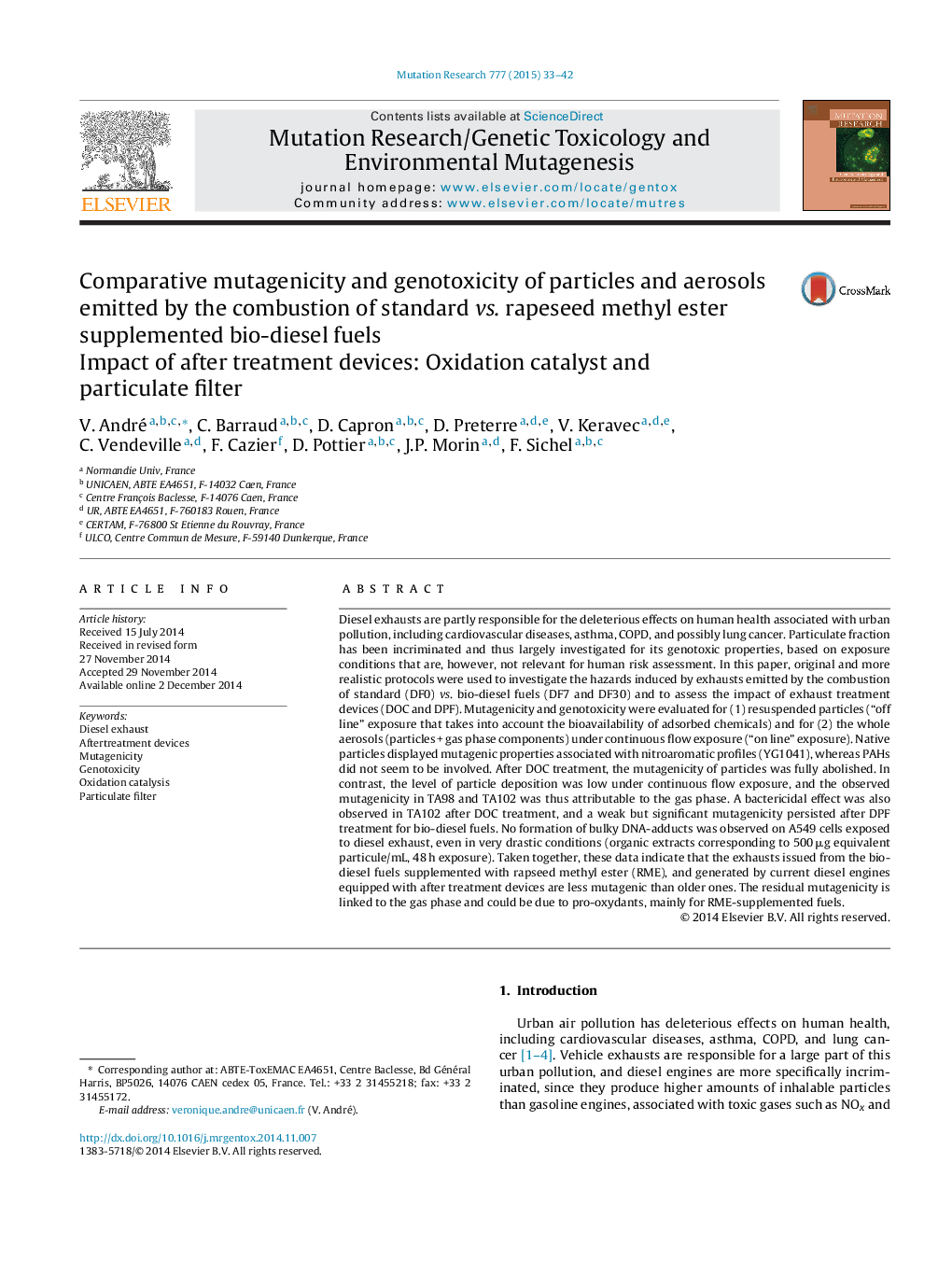| کد مقاله | کد نشریه | سال انتشار | مقاله انگلیسی | نسخه تمام متن |
|---|---|---|---|---|
| 2147898 | 1548585 | 2015 | 10 صفحه PDF | دانلود رایگان |
• Gas phase of aerosols was mutagenic in TA98 and in TA102 w/o S9mix.
• The PAHs amount on the particles was low and did not contribute to the mutagenicity.
• Mutagenicity of particles was associated with nitroaromatic profiles exclusively.
• DOC abolished the mutagenicity of particles, then retained into DPF.
• Together, DOC+DFP efficiently reduce the particulate mutagenicity.
Diesel exhausts are partly responsible for the deleterious effects on human health associated with urban pollution, including cardiovascular diseases, asthma, COPD, and possibly lung cancer. Particulate fraction has been incriminated and thus largely investigated for its genotoxic properties, based on exposure conditions that are, however, not relevant for human risk assessment. In this paper, original and more realistic protocols were used to investigate the hazards induced by exhausts emitted by the combustion of standard (DF0) vs. bio-diesel fuels (DF7 and DF30) and to assess the impact of exhaust treatment devices (DOC and DPF). Mutagenicity and genotoxicity were evaluated for (1) resuspended particles (“off line” exposure that takes into account the bioavailability of adsorbed chemicals) and for (2) the whole aerosols (particles + gas phase components) under continuous flow exposure (“on line” exposure). Native particles displayed mutagenic properties associated with nitroaromatic profiles (YG1041), whereas PAHs did not seem to be involved. After DOC treatment, the mutagenicity of particles was fully abolished. In contrast, the level of particle deposition was low under continuous flow exposure, and the observed mutagenicity in TA98 and TA102 was thus attributable to the gas phase. A bactericidal effect was also observed in TA102 after DOC treatment, and a weak but significant mutagenicity persisted after DPF treatment for bio-diesel fuels. No formation of bulky DNA-adducts was observed on A549 cells exposed to diesel exhaust, even in very drastic conditions (organic extracts corresponding to 500 μg equivalent particule/mL, 48 h exposure). Taken together, these data indicate that the exhausts issued from the bio-diesel fuels supplemented with rapseed methyl ester (RME), and generated by current diesel engines equipped with after treatment devices are less mutagenic than older ones. The residual mutagenicity is linked to the gas phase and could be due to pro-oxydants, mainly for RME-supplemented fuels.
Journal: Mutation Research/Genetic Toxicology and Environmental Mutagenesis - Volume 777, 1 January 2015, Pages 33–42
